A competitive PPC (Pay Per Click) analysis is all about seeing what your competitors are doing with their paid ads on platforms like Google Ads, so you can do it better. It helps you uncover which keywords they’re spending money on, what their ads and landing pages look like, and how much budget they might be working with.
If you can’t afford to spend a week on a manual analysis or you doubt you have enough experience to do it well, your next best option is a large language model (LLM) like ChatGPT, Claude, or Gemini. All you need to know is where to look for PPC data and a good prompt—this is what I’m going to help you with.
With Ahrefs, you’ll see exactly which keywords your competitors are bidding on, the countries they’re targeting, and what ads and landing pages they use—something you can’t do with Google Keyword Planner.
You’ll also receive estimated daily, weekly, and monthly ad spending to gauge their aggressiveness and spot patterns.
Then, ChatGPT steps in to identify keyword gaps (keywords they bid on but you don’t), pull out key insights from the data, and suggest easy wins you can act on fast. After the analysis, you can even ask it to build out a full PPC action plan, including recommendations for landing pages and better ad copy to boost your performance.
Let’s get started!

Now, plug in your competitor domains along with yours into Batch Analysis. Export the results.
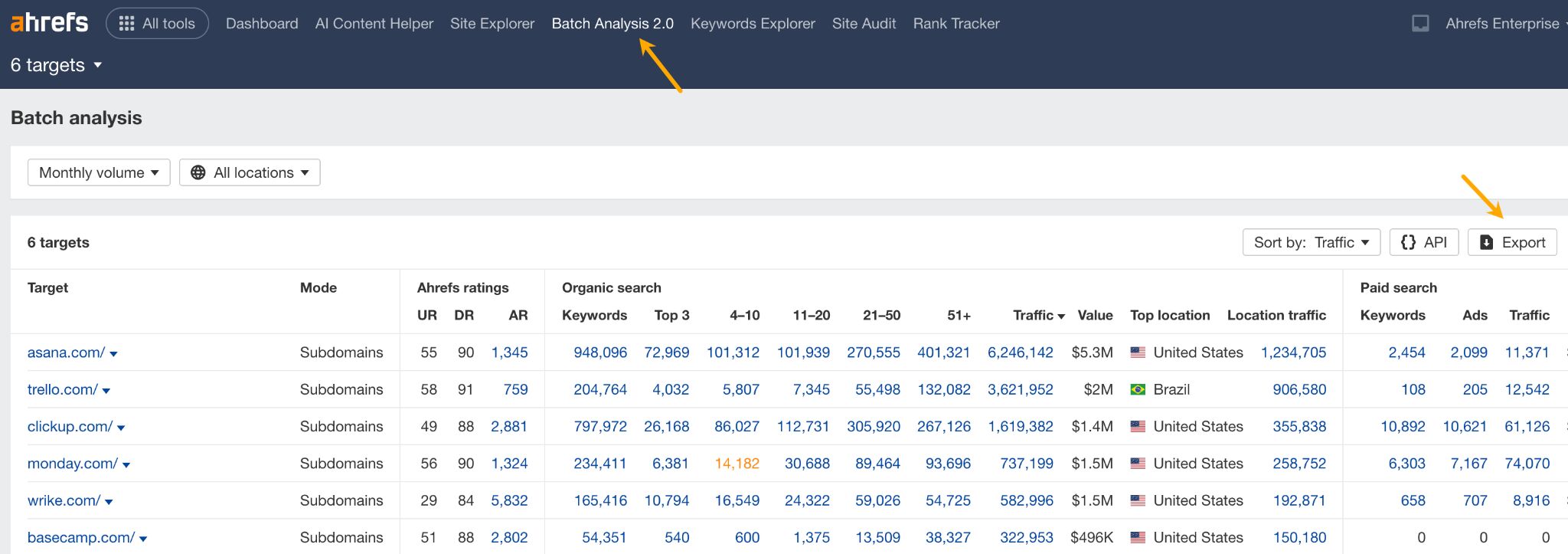
To understand how your competitors use their Google Ads budgets, check the Paid search tab in the Overview report. Look for any spending patterns or strategies that stand out. I recommend doing this step manually rather than relying on AI, since humans are naturally good at recognizing patterns, and AI sometimes struggles with reading data from images with graphs.
For example, looking at this data on average organic traffic spend from Monday, we see their current estimated spend is about $243k—around five times lower than their peak spend in August 2024. Last year, their monthly spend never dropped below $110k, with clear spikes toward the end of the year. Based on this, you can expect them to increase their bids significantly from August to December 2025.
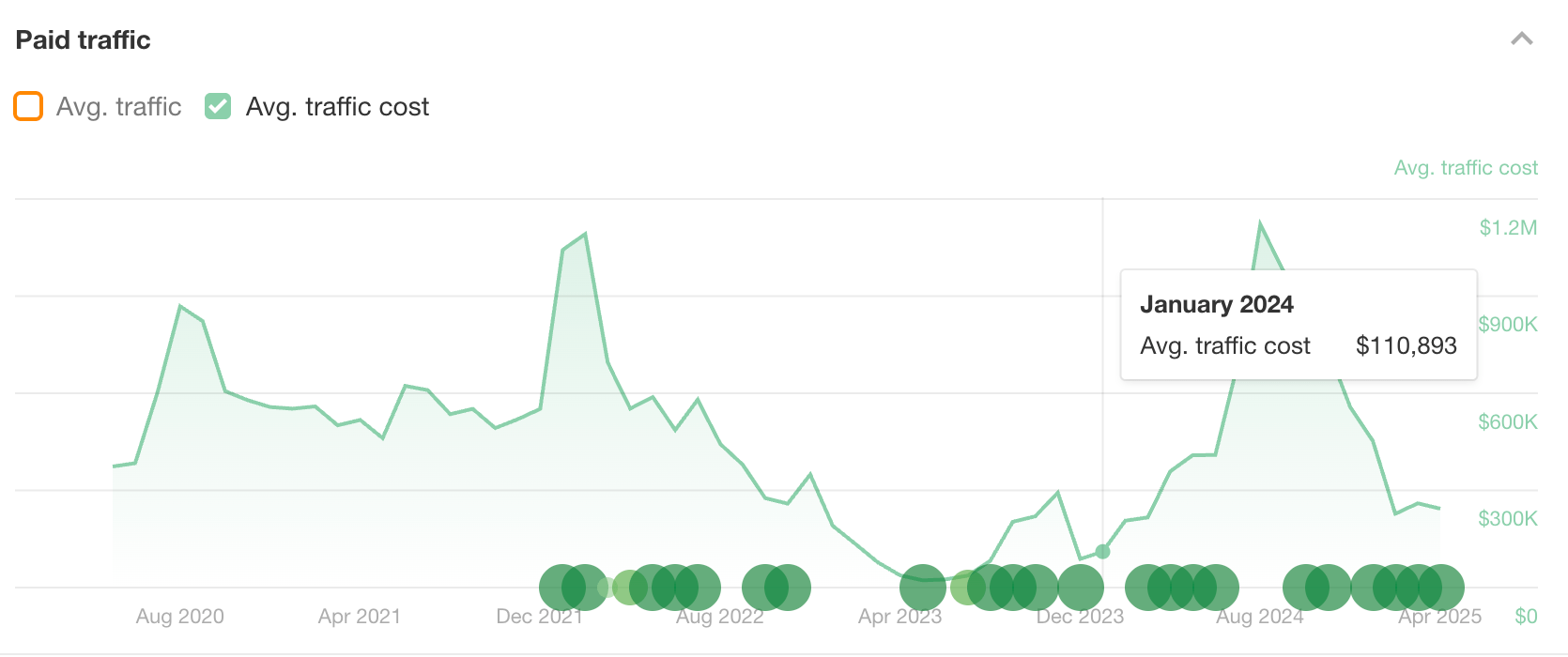
You can jot down your observations as you go and ask ChatGPT to add them to the report later.
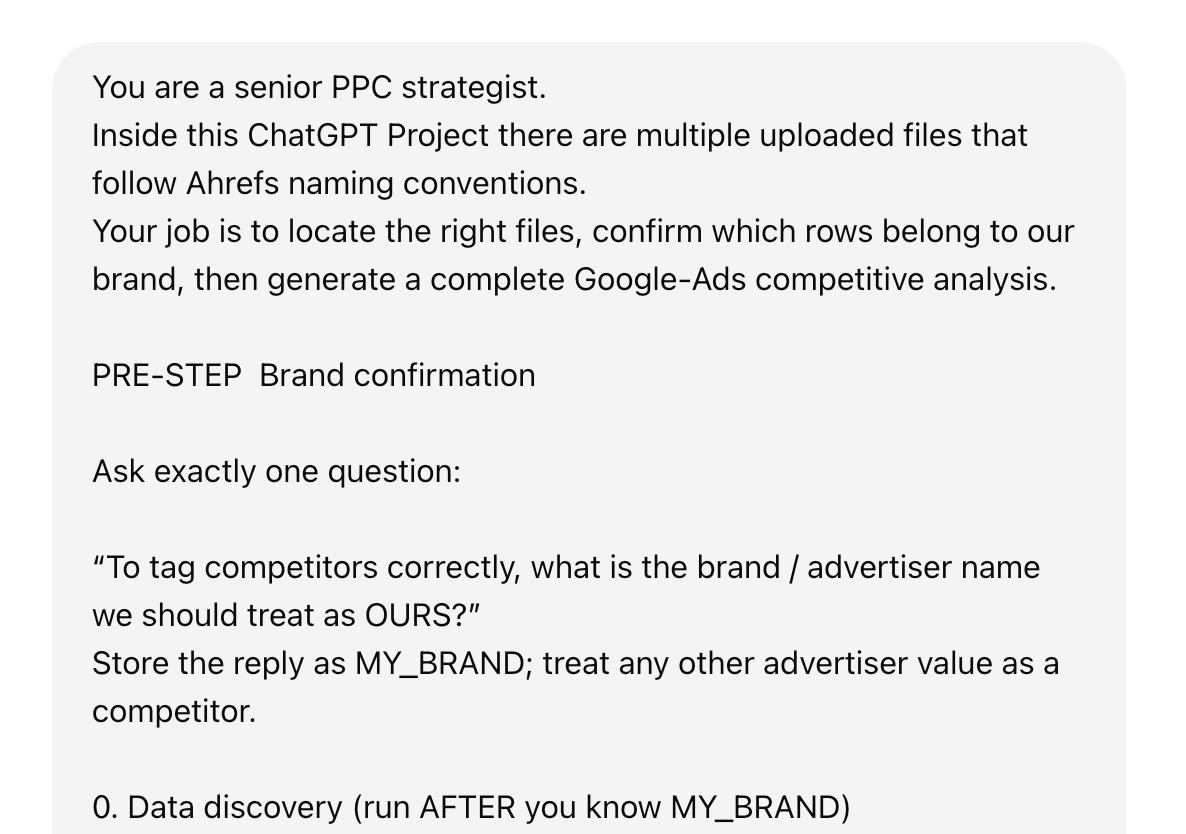
Feel free to ask your LLM any follow-up questions after the analysis is done.
At the time of writing, the project feature isn’t supported in Gemini, but if that’s your favorite LLM, try uploading the file in the chat window or creating a Gem.
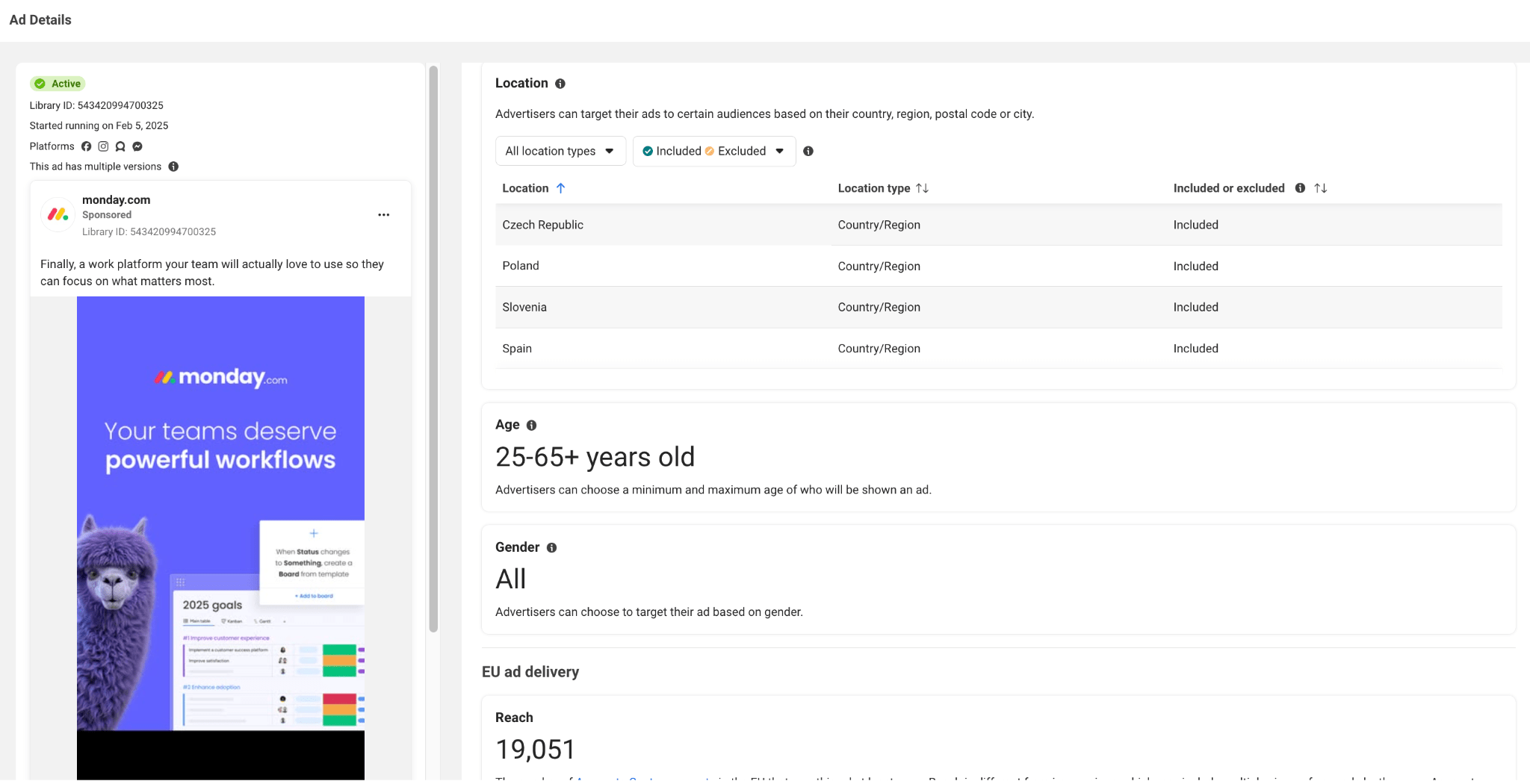
Ad libraries won’t offer much competitor data, but you can still use AI to find patterns among ad creatives. Again, the trick is to save any web page showing competitor ads in PDF format and give it to an LLM asking things like:
- What do these ads promote?
- Group every ad by dominant visual theme (human faces, product UI, icon‑only, illustration, etc.).
- List the focal point of each creative (face, logo, text‑first, CTA button) and rank them by prevalence.
- Extract every headline and overlay text. Cluster them by copy angle (benefit, fear of missing out, time savings, social proof). Which angle is dominant?
- Identify recurring design motifs.
For other display networks, tools like AdBeat or AdClarity can be helpful. For example, AdBeat gives you a quick overview of your competitor’s PPC activity—showing you the types of ads they run most often, which publishers they work with, and even letting you view their ad creatives.
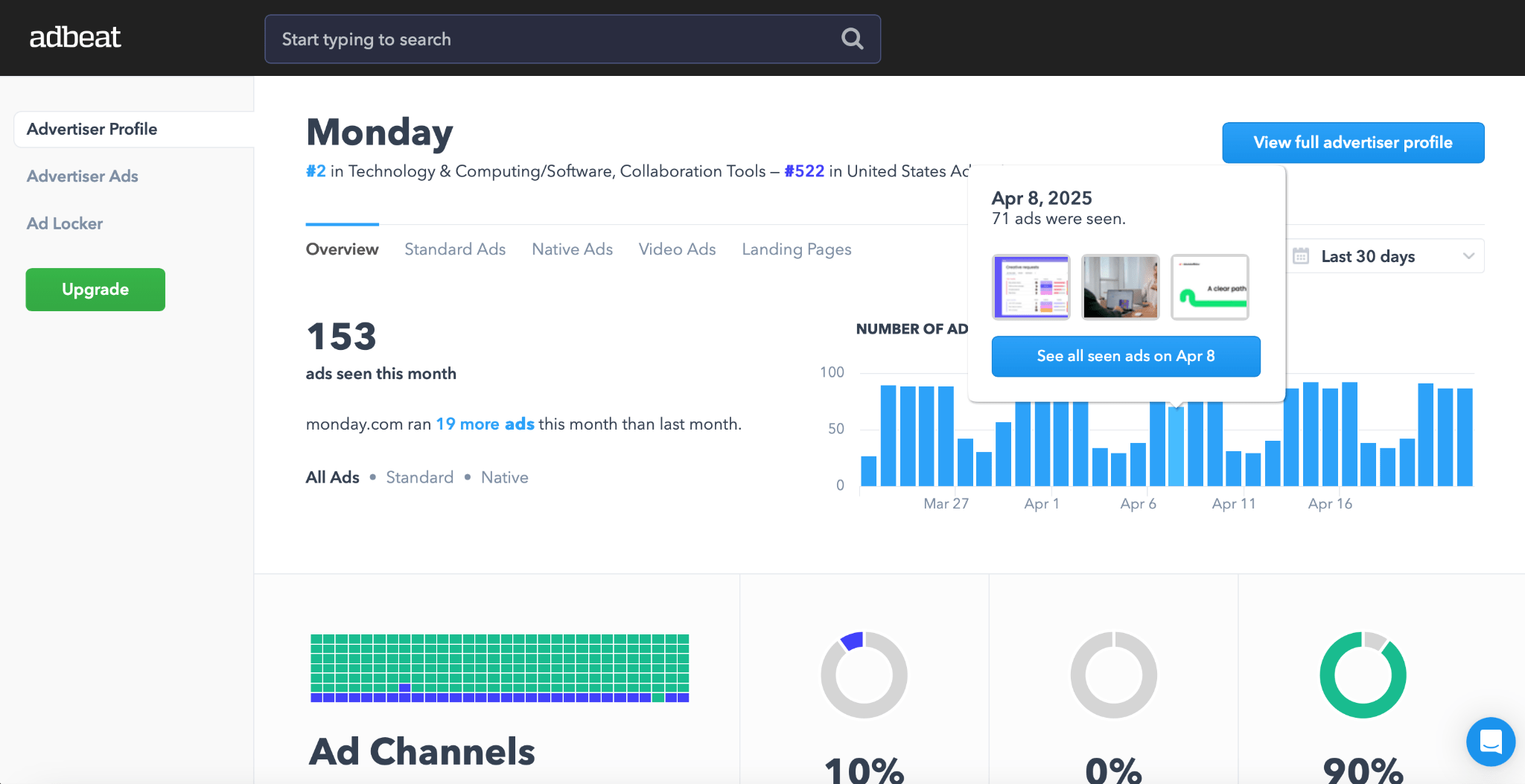
Final thoughts
Because LLMs can rerun analyses in seconds, you have the freedom to experiment wildly. Want to test if competitor headlines using emotional triggers outperform product-focused copy? Just ask. Curious how seasonality impacts their keyword strategy? Rerun your analysis with a fresh prompt.
So go ahead: throw unconventional ideas at the model, iterate rapidly, and discover opportunities you’d never uncover slogging through spreadsheets manually.
Got questions or comments? Find me on LinkedIn.
Similar Posts
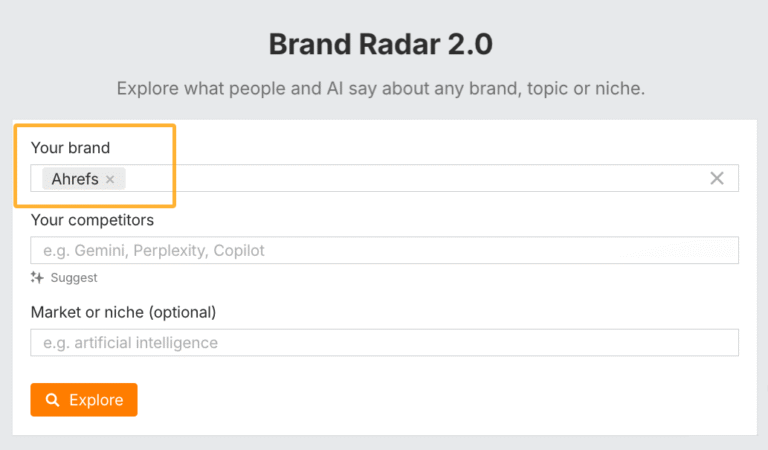
Answer Engine Optimization: How to Win in AI-Powered Search
Search is changing. People are no longer just “Googling it.” Increasingly, they’re asking AI systems for answers and getting them instantly without having to click and sift through different websites. SEO is still essential for brands to show up in these answers, but visibility now depends on more than rankings. What matters is whether your…
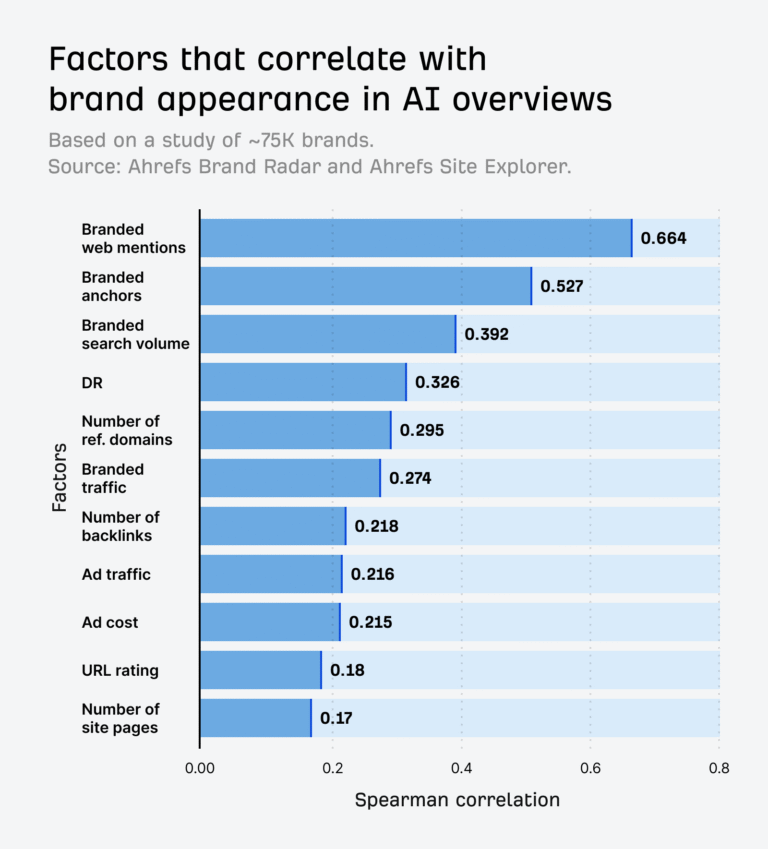
What We Actually Know About Optimizing for LLM Search
When you search on the internet, there’s a good chance LLMs are involved somewhere in the process. If you want any chance of visibility in LLM search, you need to understand how to make your brand visible in AI answers. The latest wave of experts claim to know the “secret” to AI visibility, but the…

.com vs .ai: What Domain Name Is Best For You?
Are you currently facing the tough decision of choosing between a .com and a .ai domain? Is that why you clicked on this link? It must be, I can’t think of any other reason you’d be here. Well, good news, we’re here to help you make an informed choice and register the best domain for…
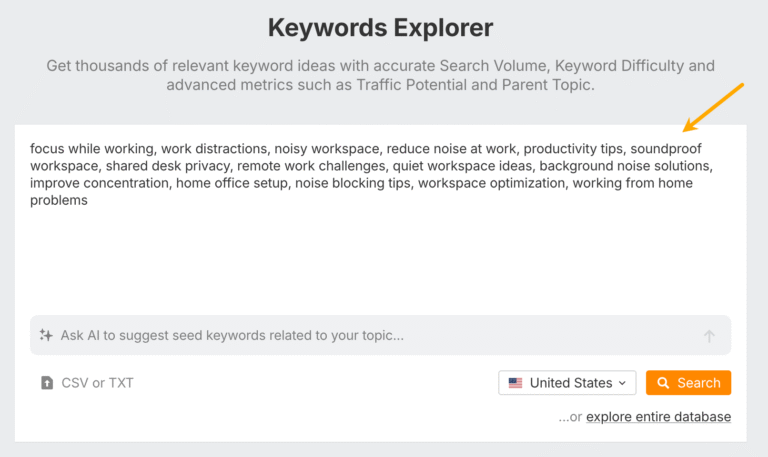
The Lean Guide to Product Research
Ever had a brilliant product idea but felt stuck, unsure if anyone would actually buy it? You’re not alone. Many aspiring entrepreneurs believe that product research is a complex and expensive process reserved for big companies with huge budgets. The good news is that’s no longer true. Today, anyone with an internet connection can uncover…

Does Being Mentioned on High Traffic Pages Influence AI Mentions?
Get the week’s best marketing content Does being seen more on the web lead to more mentions in AI assistants? I’m defining “being seen” or web visibility as the estimated total monthly organic search traffic to all pages that mention the entity. These are prominent pages on the web, with a lot of visibility. Having…

The Top 5 Most Expensive Domain Names in 2024
Websites can sell for eye-watering sums. Hope you’re sitting down… Here, we reveal the most expensive domains and URLs and share top tips for buying and selling domains. Table of Contents The world’s most expensive domain names sell for truly eye-watering figures. It’s a given that owning a good domain name has heaps of advantages,…
